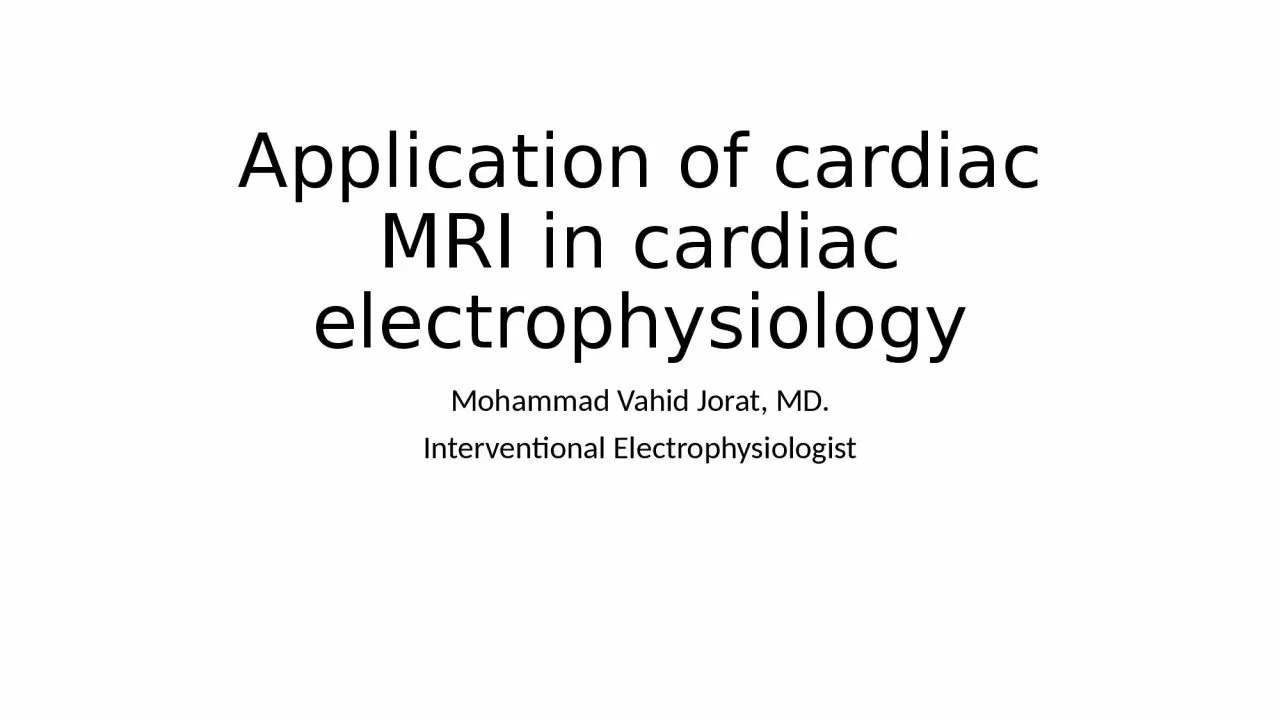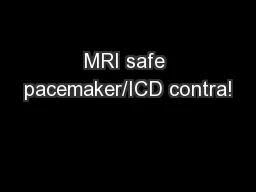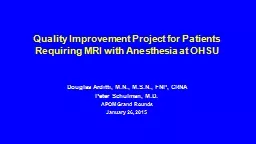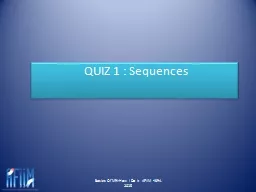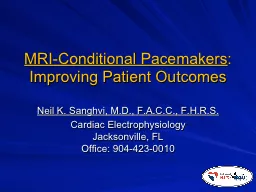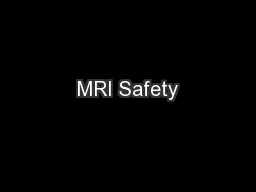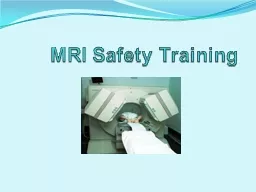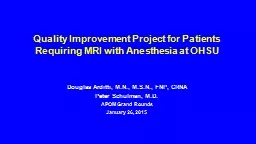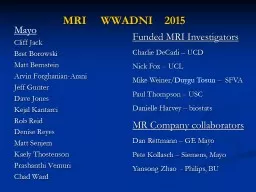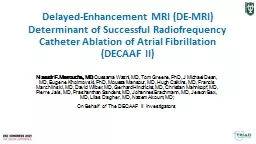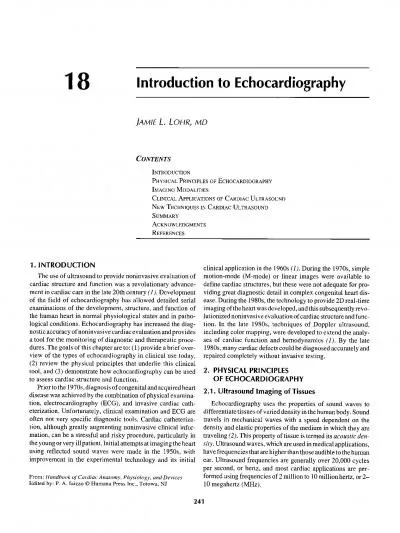PPT-Application of cardiac MRI
Author : danya | Published Date : 2024-02-09
in cardiac electrophysiology Mohammad Vahid Jorat MD Interventional Electrophysiologist Cardiac diseases leading to cardiac arrhythmia Normal heart structure Long
Presentation Embed Code
Download Presentation
Download Presentation The PPT/PDF document "Application of cardiac MRI" is the property of its rightful owner. Permission is granted to download and print the materials on this website for personal, non-commercial use only, and to display it on your personal computer provided you do not modify the materials and that you retain all copyright notices contained in the materials. By downloading content from our website, you accept the terms of this agreement.
Application of cardiac MRI: Transcript
in cardiac electrophysiology Mohammad Vahid Jorat MD Interventional Electrophysiologist Cardiac diseases leading to cardiac arrhythmia Normal heart structure Long QT Short QT CPVT ER Brugada. ) . and hypokineses.. Cardiac MRI demonstrating LV ejection fraction 49%(57-77), RV ejection fraction 31% (47-67%. ) . and . hypokineses. .. Cardiac MRI demonstrating LV ejection fraction 49%(57-77), RV ejection fraction 31% (47-67%. Dr. A.F.M. Kuijper. Spaarneziekenhuis. , Hoofddorp. Amersfoort 28 september 2012. 2010 ACCF/ACR/AHA/NASCI/SCMR Expert Consensus Permanent Cardiac Pacemakers and ICD (1). damage . or movement of the . Douglas Arditti, M.N., M.S.N., FNP, CRNA. Peter Schulman, M.D.. APOM Grand Rounds. January 26, 2015. What is the average delay for the time an MRI is scheduled and the actual time it begins?. How long does it take to start an MRI after induction of anesthesia?. QUIZ 1. :. . Sequences. Basics Of MRI:How I Do It AFIIM -ISRA 2015. QUIZ 1. :. . Sequences. MRI technique . is. . based. on. Ionizing. radiation . imaging. Magnetic. . field. and . ionizing. : . Improving. Patient Outcomes. Neil K. Sanghvi, M.D., F.A.C.C.,. F.H.R.S.. Cardiac Electrophysiology. Jacksonville, FL. Office: 904-423-0010. Disclosures. Received honoraria and travel expenses from . Magnet Type. The MRI magnet used at MCH is the superconducting type. Superconducting magnets use a special wire which loses all resistance when cooled to -270 degrees Centigrade. This requires liquid helium to surround the magnet wire. Current is applied to the wire during instillation, which generates the magnetic field as it flows. Superconducting magnets are normally FULLY ENERGIZED at all times.. Safety Background. The MRI scanner is a very large and powerful magnet. Most clinical scanners are 1.5 - 3 Tesla scanners. 3 Tesla = 30,000 gauss. Earths magnetic field ~ 0.5 gauss. MRI SAFETY. Magnetic Resonance Imaging (MRI) is one of the most powerful medical diagnostic technologies, combining strong magnetic fields with powerful computer image processing.. Douglas Arditti, M.N., M.S.N., FNP, CRNA. Peter Schulman, M.D.. APOM Grand Rounds. January 26, 2015. What is the average delay for the time an MRI is scheduled and the actual time it begins?. How long does it take to start an MRI after induction of anesthesia?. Mayo. . Cliff Jack. Bret Borowski . Matt Bernstein. Arvin Forghanian-Arani . Jeff Gunter. Dave Jones . Kejal Kantarci. Rob Reid . Denise Reyes . Matt Senjem. Kaely Thostenson. Prashanthi Vemuri . Chad Ward . Nassir F. Marrouche, MD. , Oussama . Wazni. , MD, Tom Greene, PhD, J Michael Dean, MD, Eugene . Kholmovski. , PhD, Moussa Mansour, MD, Hugh Calkins, MD, Francis . Marchlinski. , MD, David Wilber, MD, Gerhard . test that helps doctors look for and treat many different medical problems. MRI scanners use a strong magnetic field and computers to create detailed pictures. For an MRI arthrogram , a small a Magnetic Resonance Imaging (MRI) is a painless and harmless examination. This type of scan uses a powerful magnetic field and radio frequencies. It does not use Xrays. It isa technique that allows do A108 of Femoral Head Banuprakash S 1 1 Associate Professor, Department of Radio-Diagnosis, Sri Siddhartha Medical College, Agalakote, B H Road, Tumkur- 572107, India Corresponding author: Dr Banupra 18 Echocardiography JAMIE L. LOHRf MD CONTENTS INTRODUCTION PHYSICAL PRINCIPLES OF ECHOCARDIOGRAPHY IMAGING MODALITIES CLINICAL APPLICATIONS OF CARDIAC ULTRASOUND NEW TECHNIQUES IN
Download Document
Here is the link to download the presentation.
"Application of cardiac MRI"The content belongs to its owner. You may download and print it for personal use, without modification, and keep all copyright notices. By downloading, you agree to these terms.
Related Documents

